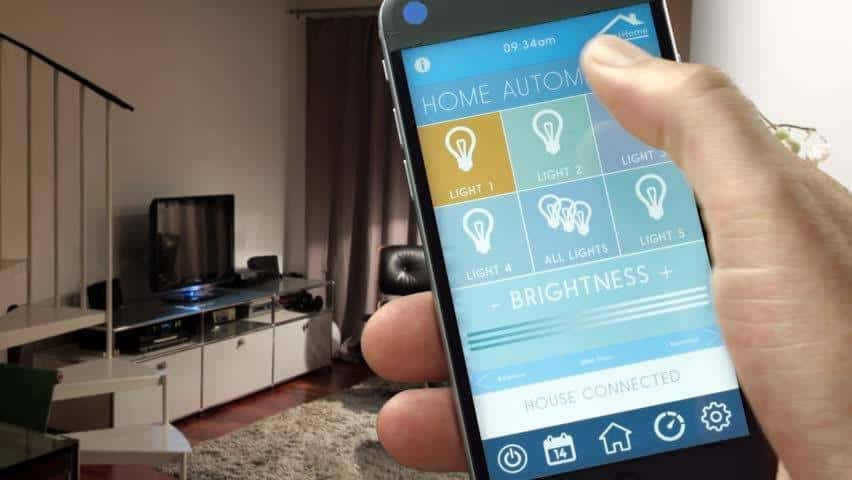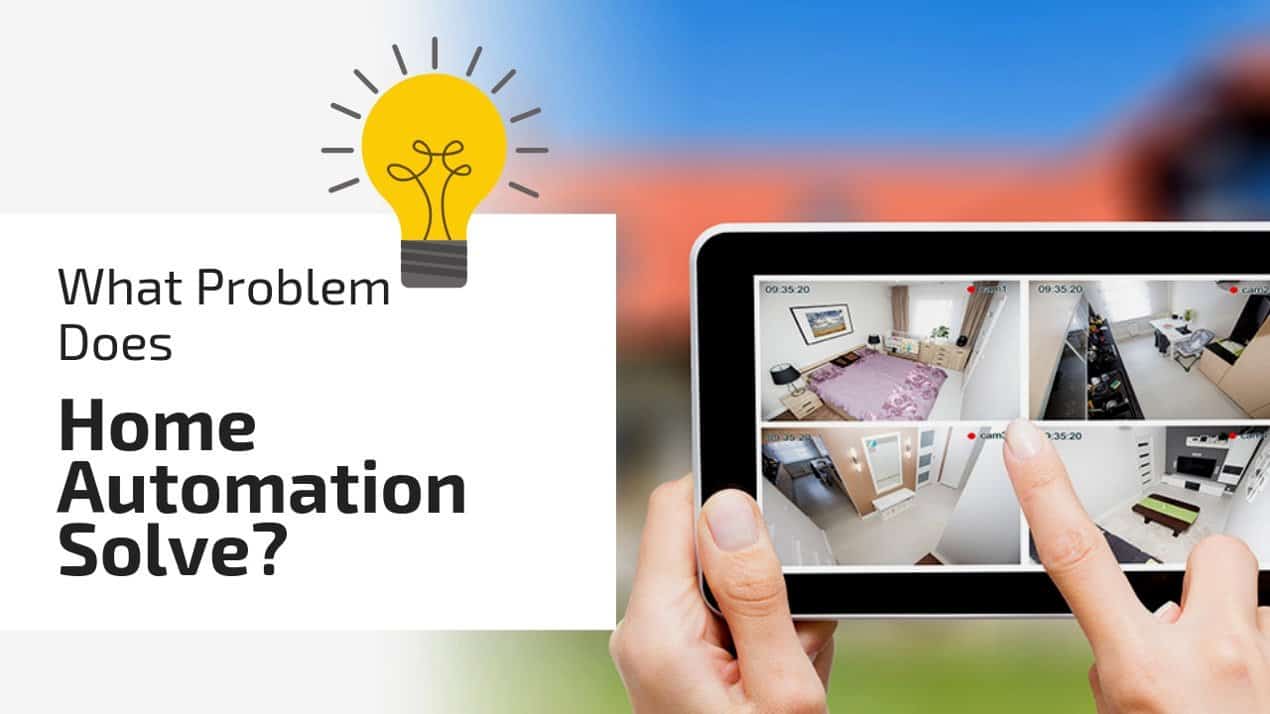Smart home automation is all the rage nowadays, and even us at Gear Gadgets and Gizmos can’t stop talking about it. For any tech idea to pick up and really get adopted by the masses, it has to meet three simple conditions; people need it, they need it now, and they have money to pay for it. In essence, it really needs to solve a pressing problem or at least fill in a missing gap.
Now, back to smart home automation, the fact that smart homes are gaining popularity at an accelerated speed means they must be solving some major problems, and are efficient at it. Smart homes are much easier to put together today than ever before.
What Problem Does Smart Home Automation Solve? The extent of automation varies from simple systems such as smart door locks to more sophisticated systems that combine home security cameras, motion detectors, smart lights, alarm system, smart plugs, smart thermostats and more in a single app.
What Problem Does Smart Home Automation Solve?

If you’re considering making your home smart, know that smart homes are not just ‘cool,’ but they’re actually functional, solving a wide range of problems that homeowners run into every day. Let’s take a quick look at six everyday problems your smart home devices can solve.
1. Home porch thieves and burglary
Security (or lack of it) is probably the biggest reason many homeowners automate their homes. The number of crime reports estimates that close to 88% of all burglaries are residential in nature, and only 13% of the reported cases get cleared due to lack of physical evidence or witnesses. Porch pirates are a problem. With more online stores such as Amazon dropping an increasing number of deliveries at thousands of doorsteps, it’s becoming more tempting for thieves to simply walk up, grab the package and run.
But smart home automation devices such as a Video Doorbell can solve this problem. Companies like Amazon, Google and Ring now offer reliable video doorbell options that you can just hook in your existing home automation system. A video doorbell is great at detecting and fending off porch thieves.
Most models have speakers that allow you to talk to whoever is at the door remotely and will send you a notification as someone starts walking towards your door front. This way, if they start picking up the package, you can alert them and let them know that you’re planning to call the police.
A video doorbell is just one of the many possible smart security features you can hook on your system to avert porch theft and burglary, others being security cameras, motion sensor smart lights, smart locks, and home alarm systems.
To help prevent porch pirates from stealing your packages there are now also available portable smart locks like the Boxlock that can be used with a box on your porch. A smart locks that will allow you to give the delivery man a code to place the package in the locked box.
2. Prevents house shouting by using the intercom features
Communication is one of the areas that smart homes can really excel. If you’ve ever had to yell from the kitchen every day to let your family know dinner is ready, you would appreciate a smart home intercom. Both Google Home and Amazon Echo smart home hubs offer intercom features, so you don’t have to shout around anymore.
Traditionally home intercoms can be very difficult and annoying to install, often requiring wiring and poking holes in the wall. However, placing Google Home’s or Amazon Echo’s speaker in each room can allow you to pass your message easily either using Google Home’s Broadcast or the Echo’s Announce feature respectively.
With the Echo’s announce feature, you can broadcast a one-way message to the rest of the Echos in your home, but other people can’t reply to it. Google Home’s Broadcast feature takes it a step further by allowing you to make a two-way broadcast, where the other people can reply to the transmitting device.

3. Did I leave the garage door open?
When it comes to home security, there is probably nothing worse than leaving your garage door open. The garage door is one of the most preferred break-in points by most burglars, and leaving it open makes it and the rest of your home an irresistible target to the bad guys.
Thankfully, home automation allows you to add smart garage monitoring and controlling devices that alert you if you left your garage door open and will enable you to lock it remotely. The MyQ smart garage door app by Chamberlain is one such technology.
The app works with Chamberlain smart garage door openers and enables you to remotely control your garage door from anywhere in the world. With such smart garage door apps and systems hooked to your home automation system, you no longer have to drive all the way back home just to check if you forgot to lock your garage door.
You can even program it to close automatically when you drive off and open automatically when you approach it back from work.
4. Home temperature regulation
It’s not uncommon to come home and find your house roasting or too chilled for your comfort. In an effort to save on the heating cost, you would naturally turn your traditional thermostat low or off when leaving home (assuming no one is left at home), and adjust accordingly when you come back.
However, walking into a chilled and uninviting home every day can be quite annoying. At other times, the little ones you left at home might try to get a bit too comfortable by turning up the heat a few more degrees than you usually do. Sometimes kids and the people you leave in your house, who don’t pay the heating bills might not understand that those extra few degrees they want will cost you significantly more when the energy bill comes around.
For that, smart home automation offers smart thermostats they allow you to keep your home heated or cooled just the way you want it, at all times. Through the native app or the smart home automation hub, you can schedule your thermostat to reduce or turn off heating/cooling when you leave your home to work, and adjust back to comfortable temperatures minutes before you come back home in the evening.
Some smart thermostats can even learn your ideal temperatures and adjust automatically every time you’re around. You can also set the maximum and minimum temperatures to avoid wastage. With brands like Nest Smart thermostat, it’s also possible to check if you left your heater own and control it remotely.
5. Home energy vampires
Energy Vampire’ is the term loosely used to refer to devices that draw power even when they’re turned off. Many electrical devices and appliances never truly turn off when they’re turned off –they continue to draw small amounts of power.
Modern devices like the PlayStation 4 and the Xbox One never turn off completely. Just like laptops, they go into hibernation mode, and they can download and install updates in the background, or other similar activities.
This might sound like a convenience, especially if you use your consoles a lot, but it continually sucks power. If your home has a large number of other devices such as the TV, stereo, and so on, the amount of energy wasted can quickly add up when in real sense you’re not using any of them.
The traditional approach is to switch off power from individual plugs, but doing this every time you’re not using your devices can be quite tedious. The smart option is to use a smart plug or switch. So you plug in all your devices into your power strip and plug your power strip into a smart socket, and to the power source.
With the smart plug, you can remotely switch off all the devices that are not in use and stop them from unnecessarily sucking power. You can also schedule the plugs to turn on/off at specific times –and some will even detect if you’ve left your devices on after you leave the home and they will automatically switch them off.

6. Did I leave the lights on (again)?
Leaving the lights on happens often enough, and can be not just annoying but wasteful. Sometimes it could be that you forgot to turn off a number of lights when you left in a hurry to work in the morning, other times it could just be that the kids turned all the lights on while playing and forgot to turn them off. These are clear signs that your home needs to be automated.
Home automation allows you to add smart lighting to your system so that you can be able to monitor and control your home’s lighting from an app on your smartphone. Some smart lighting systems can even detect when you’re away and automatically switch off the lights. Others can be programmed to turn on the lights every evening and turn off all the lights in the morning.
If you want to get a little fancier, some smart light systems such as the Philips Hue Smart Lighting change color, dime or create a ‘cinema’ scene following your command or routine. Yet, other brands come with motion sensors which automatically turn on when someone passes by.
7. Prevent water damage
Not only does smart home automation save energy. It can save money by preventing water damage if a leak occurs. Smart home sensors on dishwashers, washer machines, and water heaters have sensors that are built-in that shut off the water and notify you if it senses a water leak.
Smart water valves are needed but can easily be installed in your house. If your dishwasher, washer machine or water heater do not have a water sensor, you can use a smart flood sensor. It is a portable device that can be placed on the floor in the basement or near a hot water tank or wash machine and can be incorporated into a smart hub system.
Conclusion
The list of problems solved by smart home automation doesn’t end here, and there can be many other benefits depending on the type of devices hooked to your system.
If you have smart locks, for instance, you don’t have to hand your keys to strangers (like the handyman and delivery people). Instead, you can remotely grant then temporary access via your smart lock app which expires once they exit. If you’re planning to make your home smart, don’t be intimidated by the fancy multi-million dollar smart homes you see out there.
You can start on a small scale with individual features such as smart door locks, smart security cameras or smart garage door openers, and upgrade as funds become available.


